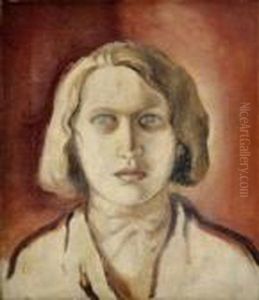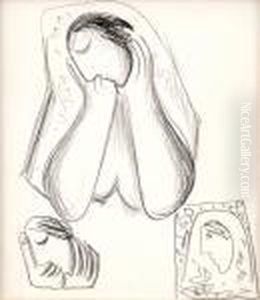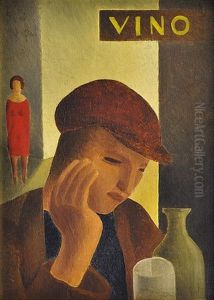Mikulas Galanda Paintings
Mikuláš Galanda was a prominent Slovak painter, graphic artist, illustrator, and art educator, who played a significant role in the development of modern Slovak art in the early 20th century. Born on December 4, 1895, in Turzovka, Austro-Hungarian Empire (present-day Slovakia), Galanda was involved in art from a young age and showed considerable talent.
He studied at the Budapest School of Decorative Arts from 1915 to 1919 where he was influenced by the burgeoning avant-garde movement. After completing his studies in Budapest, he moved to Prague, where he continued his education at the Academy of Fine Arts under the guidance of renowned Czech painter Max Švabinský.
Galanda's early work was marked by a blend of expressionism and new objectivity, reflecting the social and political turmoil of the time. His style evolved over the years, incorporating elements of cubism, constructivism, and later, surrealism. He was particularly known for his portraits, landscapes, and still lifes, which often contained a lyrical and poetic quality.
In 1925, Galanda became one of the founding members of the Slovak artist group 'R 1925', which sought to promote modern art concepts in Slovakia. He was not only a key figure in the Slovak modern art movement but also contributed significantly to art education. Galanda taught at the School of Arts and Crafts in Bratislava from 1928 until his untimely death in 1938.
Throughout his career, Galanda's work was exhibited in numerous shows both in Slovakia and abroad, establishing him as a significant artist of his time. His legacy continues to influence Slovak art, and his works are held in high regard, with many displayed in national galleries and museums.
Mikuláš Galanda's life was cut short when he died on June 5, 1938, in Bratislava, Czechoslovakia (now Slovakia). Despite his brief career, his contribution to the modern art movement in Slovakia remains enduring, and he is celebrated as one of the nation's most important artistic figures of the 20th century.


































